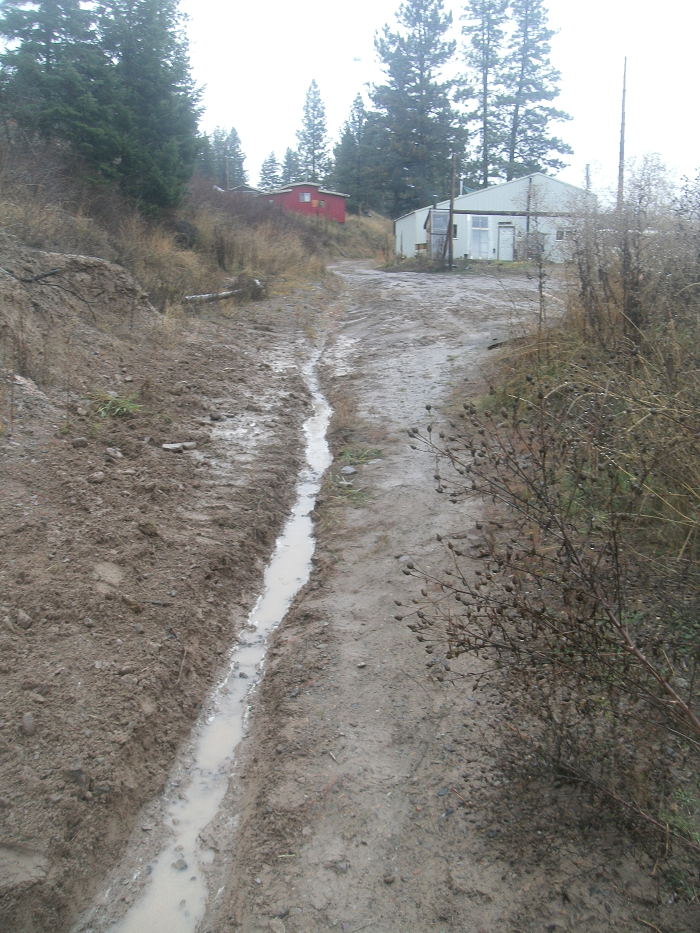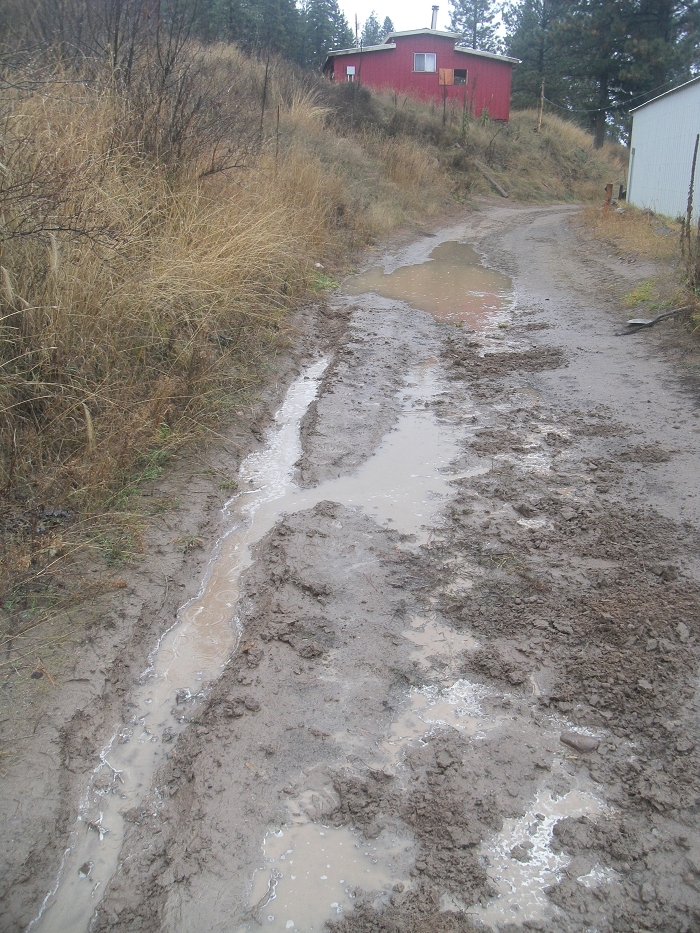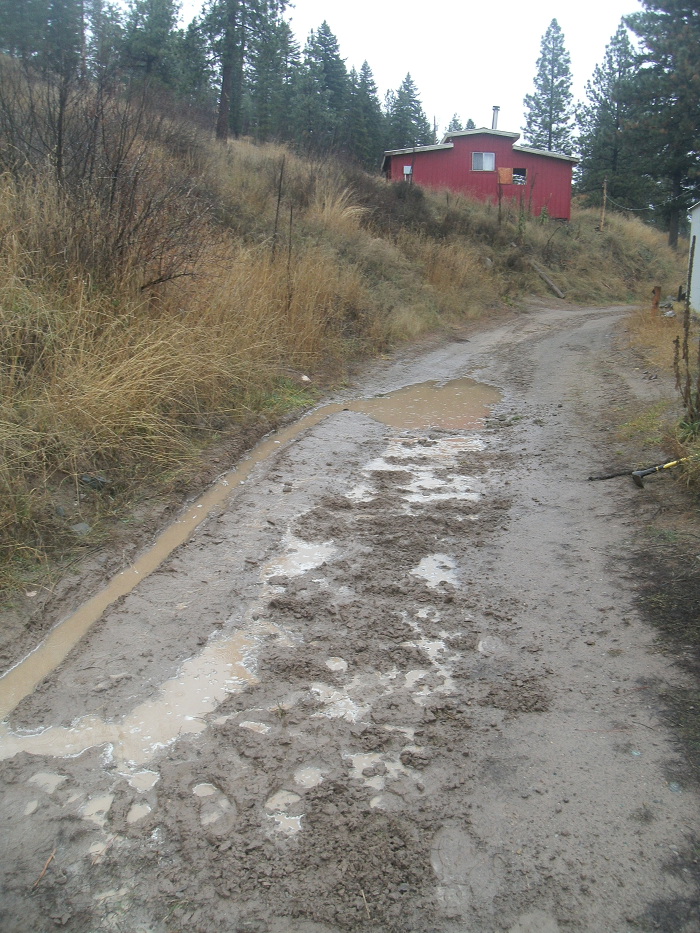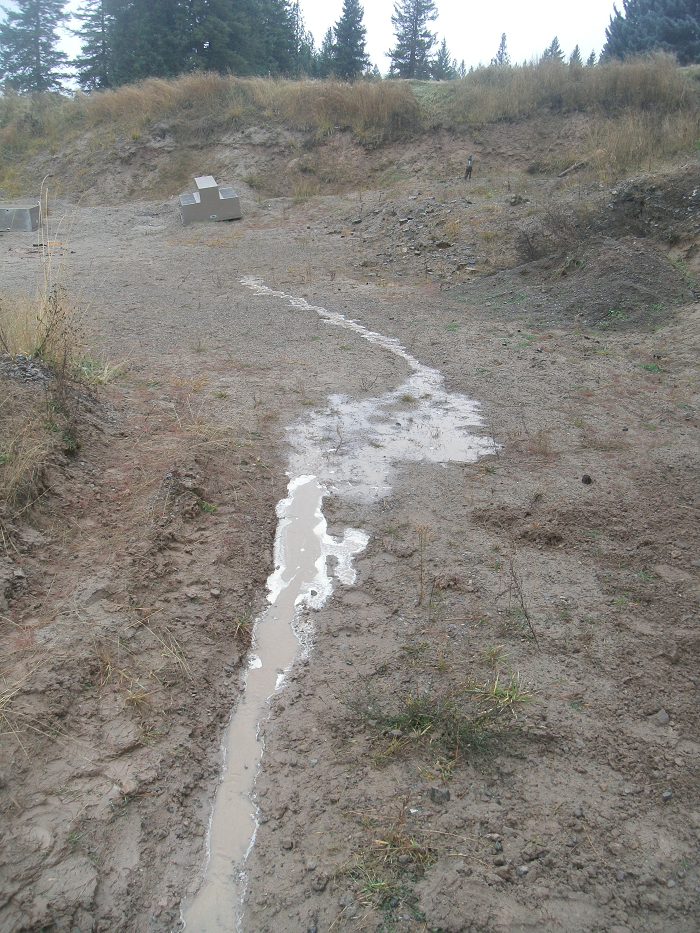BEL #709
More rain today, and more drainage ditch-digging. I was recounting the experience with
Paul today at lunch break, and realized that not only do I like tasks where I see immediate feedback as you take it step by step, but also... I just like being out in the rain. Fortunately today's biggest task indulged me in both of those dimensions.
I have a ditch system I like to think I'm developing into a discipline.
Step One = Rough It Out. For this stage, I just smacked a mattock into the earth in the general direction I wanted the drainage ditch to follow. At this point it generally follows the flow of water.
 Step Two = Clear It Out.
Step Two = Clear It Out. This stage requires a shovel, and I clear out the dirt the mattock has kicked-up. I also broaden the path to roughly shovel blade-width.

The water started to flow from the central area of the
Arrakis parking area, but the largest pond - in a part of the driveway adjacent to the
Classroom - also needed some attention. I moved my tools and operations to the area. I rolled back to Step One to start the process over again. This path didn't follow the water so much as it hugged the existing edge of the parking area. I blended it into a roughed-in ditch that had been done in the summer, so the toughest work had been done already.

In this photo I've wrapped Step One, and water is beginning to fill the upper end of it.

After Step Two over here, the path is much more defined. Then I moved on to
Step Three: Smooth It Out. If a vehicle comes along here, I don't want its tire(s) to become stuck in a rut, so I essentially shaved away the soil from the inner (building-side) of the ditch, plus cleared up some of the lower areas - which were now visible, as more water was flowing, collecting, and backing-up in the ditch I'd dug.

The end result of today's ditch-digging was what both Paul and I consider the first phase of the overhaul of Arrakis.
Far Arrakis - the sand pit, now has a nice delta where water drains.

When showing Paul what I'd done for the day, we both acknowledged that it was mostly a temporary, formative step. The entire parking pad will be lowered as much as 24 inches in some spots, with the path leading into Far Arrakis having a gradual but greater descent. More space for parking will be added on the hill side of the ditch I'd dug (in these photos, that would be to the left), so the ditch would also move further in that direction. One day at a time. My
boots were wet enough.

That's all for now. Thanks for reading, and enjoy your day...!












